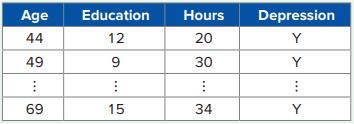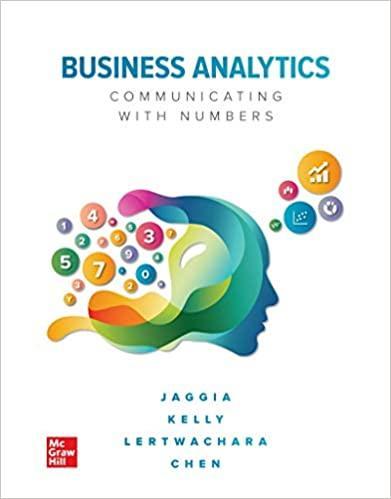Michelle McGrath is a college student working to complete an undergraduate research project to fulfill her psychology
Question:
Michelle McGrath is a college student working to complete an undergraduate research project to fulfill her psychology degree requirements. She is interested in how physical and behavioral factors might be used to predict an individual’s risk of having depression. After receiving an approval from her adviser, she sends out a survey to local residents asking for their age (Age, in years), years of education (Education), the number of hours per month they engaged in moderate or vigorous physical activities (Hours), and whether or not they have experienced depression (Depression: Y/N). A portion of the data from 261 respondents is shown in the accompanying table.

a. Bin the Age, Education, and Hours variables as follows. For Analytic Solver, choose the Equal interval option and three bins for each of the variables. For R, bin Age into [20, 40), [40,60), and [60, 81), Education into [9, 12), [12, 16), and [16, 20), and Hours into [0, 55), [55, 105), and [105, 150). What are the bin numbers for the variables of the first two observations?
b. Partition the transformed data and develop a naïve Bayes classification model. Report the accuracy, sensitivity, specificity, and precision rates for the validation data set.
c. Generate the ROC curve. What is the area under the ROC curve (or AUC value)?
d. Interpret the results and evaluate the effectiveness of the naïve Bayes model.
Step by Step Answer:

Business Analytics Communicating With Numbers
ISBN: 9781260785005
1st Edition
Authors: Sanjiv Jaggia, Alison Kelly, Kevin Lertwachara, Leida Chen





